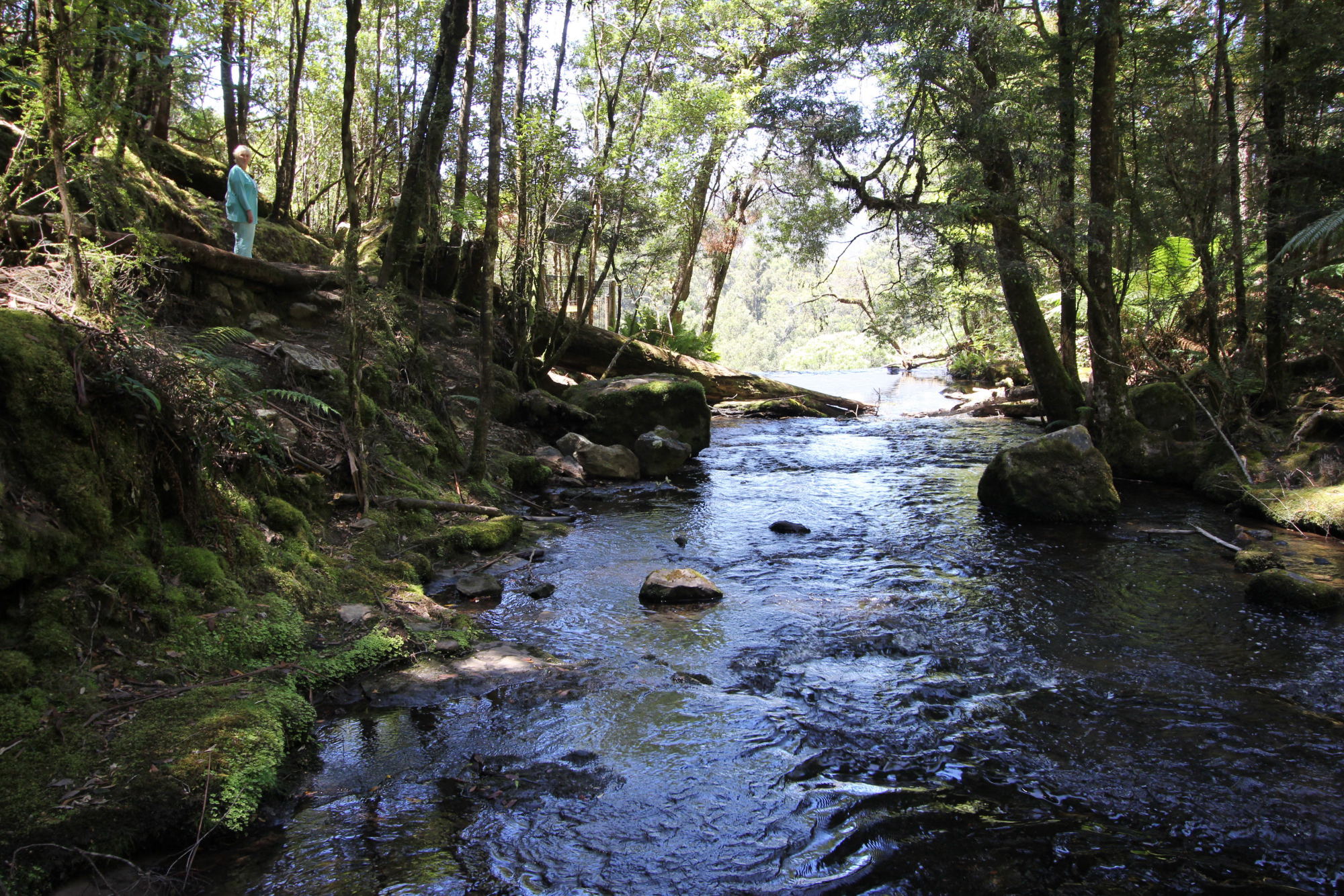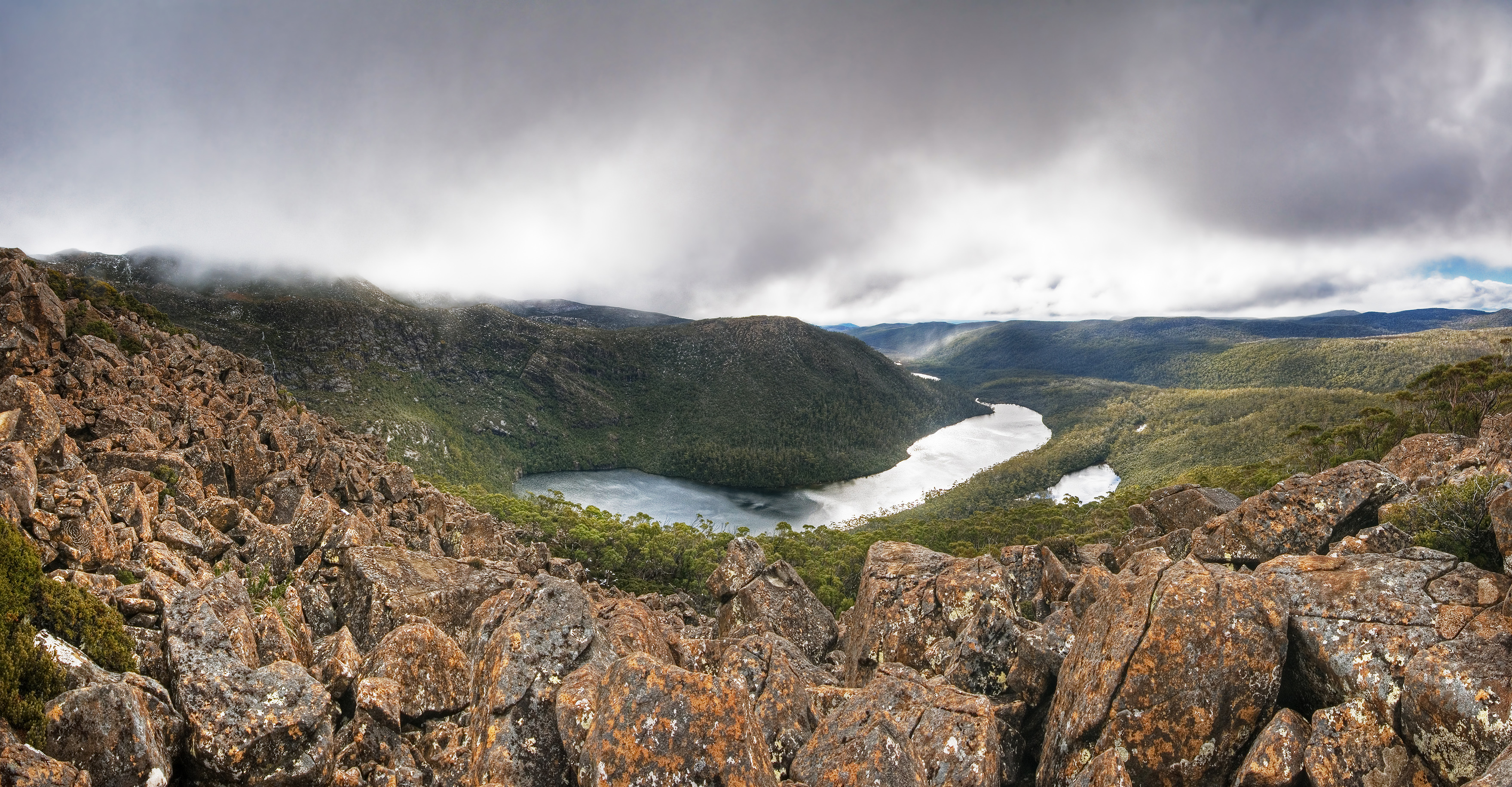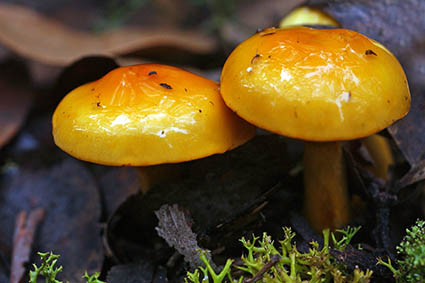Mount Field National Park on:
[Wikipedia]
[Google]
[Amazon]

 Mount Field National Park is a national park in
Mount Field National Park is a national park in
 In alpine areas podzolic, humus and leached soil is most common. The podzols often occur on deep periglacial solifluction deposits down to . Alluvial floodplains have developed in the lower park on deposits of quaternary alluvium.
In alpine areas podzolic, humus and leached soil is most common. The podzols often occur on deep periglacial solifluction deposits down to . Alluvial floodplains have developed in the lower park on deposits of quaternary alluvium.
Management Plan for Mt Field National Park
only mentions fungi in the context of their destructive effects (''Phytophthora cinnamomi'' and ''Chalara australis''), the Park has a great variety of fungi that perform beneficial ecological roles. In fact, most fungi perform positive rather than negative roles. Even parasitic fungi – often regarded only negatively – are a vital part of healthy ecosystems, regulating ecosystem functions. As primary recyclers of organic matter, saprobic fungi break down fallen branches and leaf litter, making vital nutrients available to other organisms. Other fungi form symbiotic relationships with other organisms. Although rarely acknowledged, the great majority of plants in Mount Field National Park (indeed in the world) form mutually beneficial
As primary recyclers of organic matter, saprobic fungi break down fallen branches and leaf litter, making vital nutrients available to other organisms. Other fungi form symbiotic relationships with other organisms. Although rarely acknowledged, the great majority of plants in Mount Field National Park (indeed in the world) form mutually beneficial
Atlas of Living Australia
 The Green Elfcup (
The Green Elfcup (
Chlorociboria aeruginascens'' group
is found growing on rotten wood in wetter parts of the park. Even when its fruitbodies are not conspicuous, its presence can often be detected by the blue-green staining of the wood it inhabits. The Slimy Yellow Cortinar (
Cortinarius sinapicolor
') is one of the more commonly encountered species that forms mycorrhizal relationships with various Eucalyptus species and is recognisable by its viscous sulphur-yellow fruit bodies. The Australian citizen-science organisation
Fungimap
is documenting and mapping the distribution of fungi including those that occur in National Parks. Despite their essential roles in supporting ecosystems, fungi are barely recognised as a vital part of Australia's biodiversity. Although Australia has national and state level biodiversity conservation strategies and has ratified international conventions, most overlook fungi, includin
Tasmania's Natural Heritage Strategy
which only makes one generic reference to fungi.

 *
*
Tasmania Parks and Wildlife Service website
Mt Field National Park, Tasmania, Australia
Tasmanian Parks and Wildlife Service - Mount Field National Park
{{Authority control National parks of Tasmania Protected areas established in 1916 1916 establishments in Australia Tasmanian Wilderness World Heritage Area

 Mount Field National Park is a national park in
Mount Field National Park is a national park in Tasmania
)
, nickname =
, image_map = Tasmania in Australia.svg
, map_caption = Location of Tasmania in AustraliaCoordinates:
, subdivision_type = Country
, subdi ...
, Australia
Australia, officially the Commonwealth of Australia, is a sovereign country comprising the mainland of the Australian continent, the island of Tasmania, and numerous smaller islands. With an area of , Australia is the largest country by ...
, 64 km northwest of Hobart
Hobart ( ; Nuennonne/ Palawa kani: ''nipaluna'') is the capital and most populous city of the Australian island state of Tasmania. Home to almost half of all Tasmanians, it is the least-populated Australian state capital city, and second-small ...
. The landscape ranges from eucalyptus
''Eucalyptus'' () is a genus of over seven hundred species of flowering trees, shrubs or mallees in the myrtle family, Myrtaceae. Along with several other genera in the tribe Eucalypteae, including '' Corymbia'', they are commonly known as ...
temperate rainforest
Temperate rainforests are coniferous or broadleaf forests that occur in the temperate zone and receive heavy rain.
Temperate rain forests occur in oceanic moist regions around the world: the Pacific temperate rain forests of North American ...
to alpine moorland, rising to 1,434 metres (4,705 ft) at the summit of Mount Field West.
History
Mount Field National Park was founded in 1916, making it, along withFreycinet National Park
Freycinet National Park is a national park on the east coast of Tasmania, Australia, 125 km northeast of Hobart, Australia, Hobart. It occupies a large part of the Freycinet Peninsula, named after French navigator Louis de Freycinet, and Sc ...
, Tasmania's oldest national park.
The area around Russell Falls has been protected for its natural beauty since 1885, when it was set aside as Tasmania's first nature reserve. The last known wild thylacine
The thylacine ( , or , also ) (''Thylacinus cynocephalus'') is an extinct carnivorous marsupial that was native to the Australian mainland and the islands of Tasmania and New Guinea. The last known live animal was captured in 1930 in Tasma ...
was captured in the region in 1933. The reserve was called "National Park" before 1946, but was officially renamed to its present name in 1947.
Etymology
Mount Field National Park was named for JudgeBarron Field
Barron Field (Camp Taliaferro Field #2) is a former World War I military airfield, located West-southwest of Everman, Texas. It operated as a training field for the Air Service, United States Army between 1917 until 1921. It was one of thir ...
, who visited Tasmania as an itinerant judge in 1819 and 1821.
Geology
During thePleistocene
The Pleistocene ( , often referred to as the ''Ice age'') is the geological Epoch (geology), epoch that lasted from about 2,580,000 to 11,700 years ago, spanning the Earth's most recent period of repeated glaciations. Before a change was fina ...
period, a snowfield covered the top of the Mount Field plateau and fed glaciers in the surrounding valleys. A large, 12 km long glacier formed the broad river valley and the cirque walls above Lake Seal. Twisted Tarn, Twilight Tarn, and the tarns on the tarn shelf were formed by glacial scouring. A glacier flowed south from the Rodway Range, forming lakes Belcher and Nelton, and north to form the Hayes Valley and Lake Hayes.
 In alpine areas podzolic, humus and leached soil is most common. The podzols often occur on deep periglacial solifluction deposits down to . Alluvial floodplains have developed in the lower park on deposits of quaternary alluvium.
In alpine areas podzolic, humus and leached soil is most common. The podzols often occur on deep periglacial solifluction deposits down to . Alluvial floodplains have developed in the lower park on deposits of quaternary alluvium.
Fauna
The park has good representation of much of native Tasmanian fauna includingwombats
Wombats are short-legged, muscular quadrupedal marsupials that are native to Australia. They are about in length with small, stubby tails and weigh between . All three of the extant species are members of the family Vombatidae. They are adap ...
, platypuses, eastern barred bandicoots
Bandicoots are a group of more than 20 species of small to medium-sized, terrestrial, largely nocturnal marsupial omnivores in the order Peramelemorphia. They are endemic to the Australia–New Guinea region, including the Bismarck Archipelago ...
, echidnas, and the Tasmanian devil
The Tasmanian devil (''Sarcophilus harrisii'') ( palawa kani: purinina) is a carnivorous marsupial of the family Dasyuridae. Until recently, it was only found on the island state of Tasmania, but it has been reintroduced to New South Wales ...
.
Fungi
Mount Field National Park is also home to an enormous diversity of fungi. Fungi are ecologically important and megadiverse, yet their significance in underpinning the terrestrial ecology of the Park is little recognised. While thManagement Plan for Mt Field National Park
only mentions fungi in the context of their destructive effects (''Phytophthora cinnamomi'' and ''Chalara australis''), the Park has a great variety of fungi that perform beneficial ecological roles. In fact, most fungi perform positive rather than negative roles. Even parasitic fungi – often regarded only negatively – are a vital part of healthy ecosystems, regulating ecosystem functions.
 As primary recyclers of organic matter, saprobic fungi break down fallen branches and leaf litter, making vital nutrients available to other organisms. Other fungi form symbiotic relationships with other organisms. Although rarely acknowledged, the great majority of plants in Mount Field National Park (indeed in the world) form mutually beneficial
As primary recyclers of organic matter, saprobic fungi break down fallen branches and leaf litter, making vital nutrients available to other organisms. Other fungi form symbiotic relationships with other organisms. Although rarely acknowledged, the great majority of plants in Mount Field National Park (indeed in the world) form mutually beneficial mycorrhiza
A mycorrhiza (from Greek μύκης ', "fungus", and ῥίζα ', "root"; pl. mycorrhizae, mycorrhiza or mycorrhizas) is a symbiotic association between a fungus and a plant. The term mycorrhiza refers to the role of the fungus in the plan ...
l relationships with fungi.
Given the great diversity of plants, specialist habitats and micro-climates in the park, a great diversity of fungi, including lichens, is also expected to occur there. Two hundred and eighty-nine species have already been recorded by field naturalists and interested individuals and a list can be found in thAtlas of Living Australia
 The Green Elfcup (
The Green Elfcup (Chlorociboria aeruginascens'' group
is found growing on rotten wood in wetter parts of the park. Even when its fruitbodies are not conspicuous, its presence can often be detected by the blue-green staining of the wood it inhabits. The Slimy Yellow Cortinar (
Cortinarius sinapicolor
') is one of the more commonly encountered species that forms mycorrhizal relationships with various Eucalyptus species and is recognisable by its viscous sulphur-yellow fruit bodies. The Australian citizen-science organisation
Fungimap
is documenting and mapping the distribution of fungi including those that occur in National Parks. Despite their essential roles in supporting ecosystems, fungi are barely recognised as a vital part of Australia's biodiversity. Although Australia has national and state level biodiversity conservation strategies and has ratified international conventions, most overlook fungi, includin
Tasmania's Natural Heritage Strategy
which only makes one generic reference to fungi.
Accommodation and facilities
There is camping, with powered and unpowered sites at the entrance to the Park, as well as the Government-owned Lake Dobson cabins near the end of the access road within the Park. Several private ski/walking clubs have private huts, and a ski-lodge on the ski slopes has limited accommodation during the skiing season. The Visitor Centre located near the entrance to the Park houses an interpretive centre, cafe, gift shop, gallery and public toilets. Beside the Visitor Centre there are picnic andbarbecue
Barbecue or barbeque (informally BBQ in the UK, US, and Canada, barbie in Australia and braai in South Africa) is a term used with significant regional and national variations to describe various cooking methods that use live fire and smoke ...
facilities, as well as a playground and public toilets.
Activities
From the visitor centre:
 *
* Russell Falls
The Russell Falls, a tieredcascade waterfall on the Russell Falls Creek, is located in the Central Highlands region of Tasmania, Australia.
Location and features
The Russell Falls are situated on the eastern boundary of Mount Field National ...
is an easy, 20-minute return walk on asphalt and boardwalks.
* Horseshoe Falls
Horseshoe Falls is the largest of the three waterfalls that collectively form Niagara Falls on the Niagara River along the Canada–United States border. Approximately 90% of the Niagara River, after diversions for hydropower generation, flows ...
is a 30-minute walk.
*The Lady Barron Falls
The Lady Barron Falls, a tieredcascade waterfall on the Lady Barron Creek, is located in the Central Highlands region of Tasmania, Australia.
Location and features
The Lady Barron Falls are situated in the Mount Field National Park, a short ...
circuit (via Russell Falls and Horseshoe Falls) is approximately two hours return.
*Tall Trees Walk is an easy thirty-minute walk through the tall swamp gums.
Walks from the Lake Dobson car park include:
*The Ski Lodge and Lake Seal lookout, one hour return.
*Seagers Lookout, two hours return.
*Mount Field East via Lake Nicholls, five hours return.
*Mount Field West, eight hours return.
*Tarn Shelf, Lake Newdegate, Twilight Tarn and Lake Webster circuit, six hours return.
Mount Field National park has one of Tasmania's downhill skiing areas. There are three ski tows, two on Mount Mawson and one on the Rodway range. There is generally sufficient snow cover for skiing from mid July to mid September.
See also
* Protected areas of Tasmania *Mount Field (Tasmania)
Mount Field West is a mountain in the western portion of Mount Field National Park in the southern region of Tasmania, Australia.
The mountain is frequently snow-covered, sometimes even in summer. It is a major feature of the national park, and ...
Notes
References
Tasmania Parks and Wildlife Service website
External links
Mt Field National Park, Tasmania, Australia
Tasmanian Parks and Wildlife Service - Mount Field National Park
{{Authority control National parks of Tasmania Protected areas established in 1916 1916 establishments in Australia Tasmanian Wilderness World Heritage Area